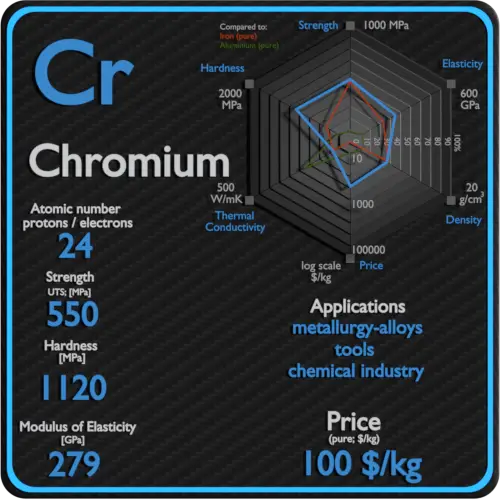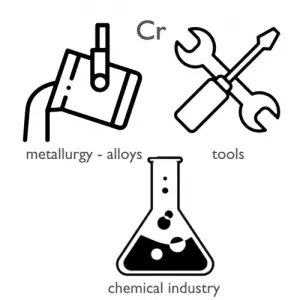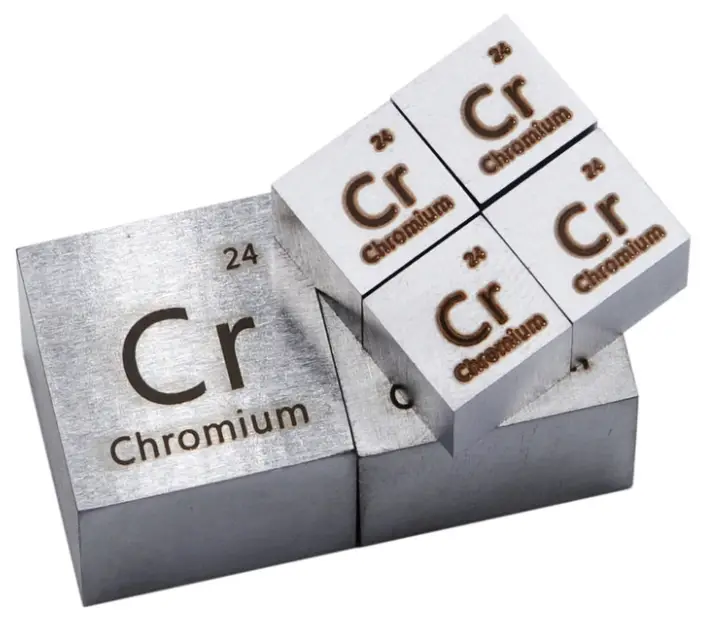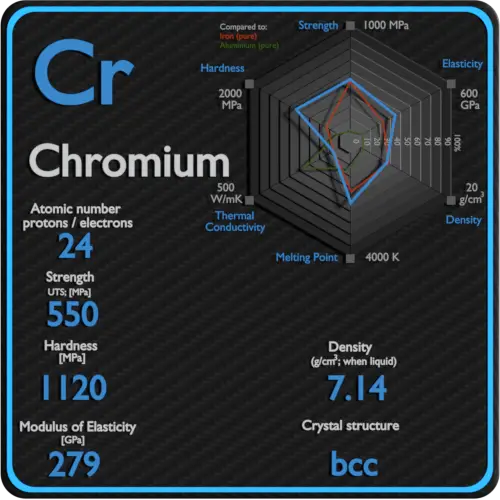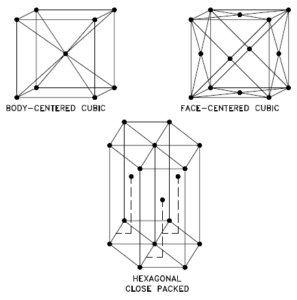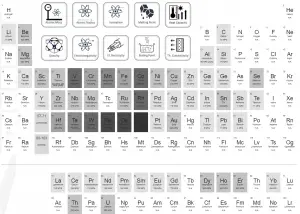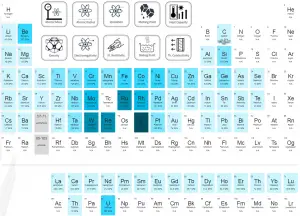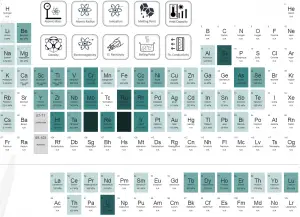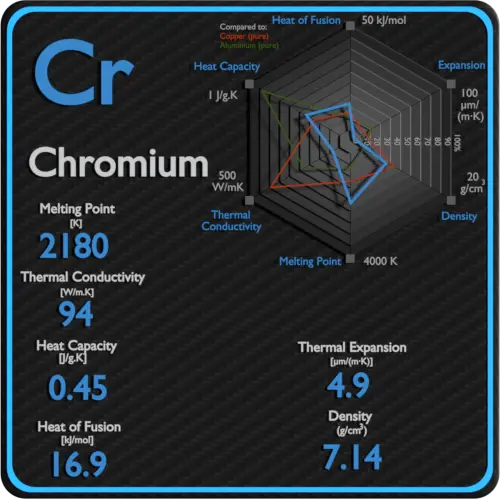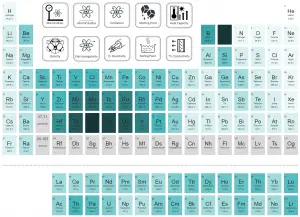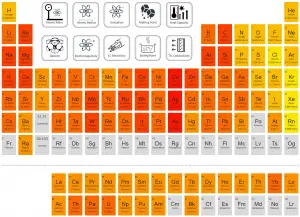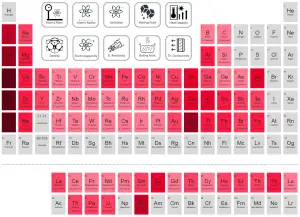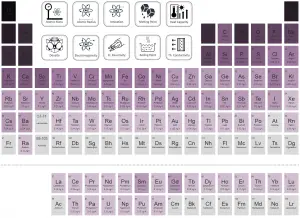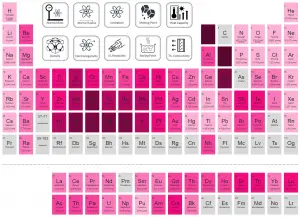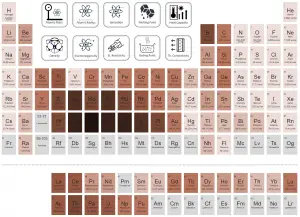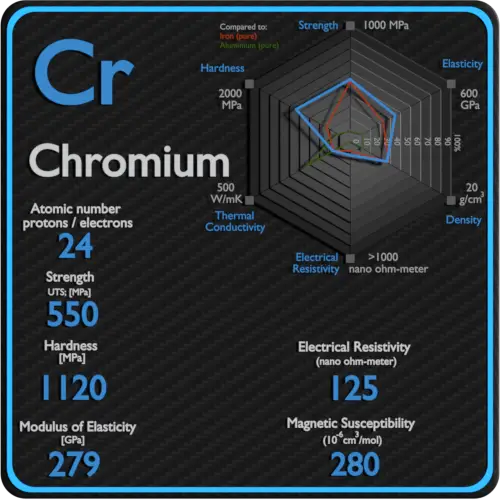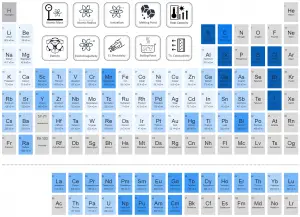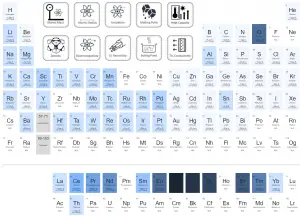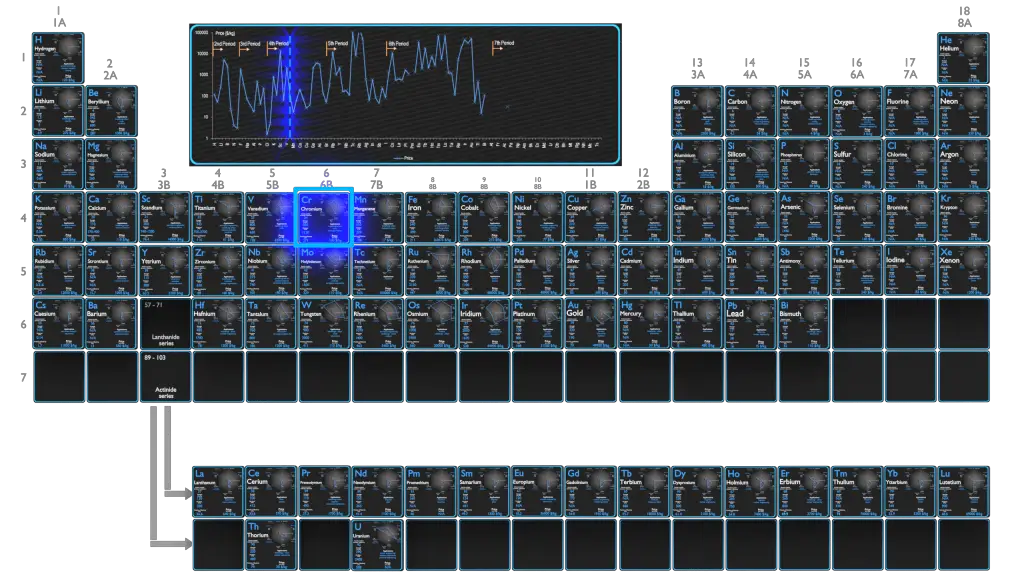About Chromium
Chromium is a steely-grey, lustrous, hard and brittle metal which takes a high polish, resists tarnishing, and has a high melting point. A major development was the discovery that steel could be made highly resistant to corrosion and discoloration by adding metallic chromium to form stainless steel.
Summary
| Element | Chromium |
| Atomic number | 24 |
| Element category | Transition Metal |
| Phase at STP | Solid |
| Density | 7.14 g/cm3 |
| Ultimate Tensile Strength | 550 MPa |
| Yield Strength | 131 MPa |
| Young’s Modulus of Elasticity | 279 GPa |
| Mohs Scale | 8.5 |
| Brinell Hardness | 1120 MPa |
| Vickers Hardness | 1060 MPa |
| Melting Point | 1907 °C |
| Boiling Point | 2671 °C |
| Thermal Conductivity | 93.7 W/mK |
| Thermal Expansion Coefficient | 4.9 µm/mK |
| Specific Heat | 0.45 J/g K |
| Heat of Fusion | 16.9 kJ/mol |
| Heat of Vaporization | 344.3 kJ/mol |
| Electrical resistivity [nanoOhm meter] | 125 |
| Magnetic Susceptibility | +280e-6 cm^3/mol |
Applications of Chromium
Chromium is one of the most important and indispensable industrial metals because of its hardness and resistance to corrosion. But it is used for more than the production of stainless steel and nonferrous alloys; it is also used to create pigments and chemicals used to process leather. In metallurgy, Chromium increases hardness, strength, and corrosion resistance. The strengthening effect of forming stable metal carbides at the grain boundaries and the strong increase in corrosion resistance made chromium an important alloying material for steel. Generally speaking, the concentration specified for most grades is approximately 4%. This level appears to result in the best balance between hardness and toughness. Chromium plays an important role in the hardening mechanism and is considered irreplaceable. At higher temperatures, chromium contributes increased strength. It is ordinarily used for applications of this nature in conjunction with molybdenum. The resistance of stainless steels is based on passivation. For passivation to occur and remain stable, the Fe-Cr alloy must have a minimum chromium content of about 11% by weight, above which passivity can occur and below which it is impossible.
Production and Price of Chromium
Raw materials prices change daily. They are primarily driven by supply, demand and energy prices. In 2019, prices of pure Chromium were at around 100 $/kg.
Chromium is mined as chromite ore. Globally this ore is available in India, South Africa, Finland, Zimbabwe, Kazakihstan and the Philippines. Commercially, chromium is produced from chromite using silicothermic or aluminothermic reactions. Roasting and leaching processes are also used.
Source: www.luciteria.com
Mechanical Properties of Chromium
Strength of Chromium
In mechanics of materials, the strength of a material is its ability to withstand an applied load without failure or plastic deformation. Strength of materials basically considers the relationship between the external loads applied to a material and the resulting deformation or change in material dimensions. In designing structures and machines, it is important to consider these factors, in order that the material selected will have adequate strength to resist applied loads or forces and retain its original shape. Strength of a material is its ability to withstand this applied load without failure or plastic deformation.
For tensile stress, the capacity of a material or structure to withstand loads tending to elongate is known as ultimate tensile strength (UTS). Yield strength or yield stress is the material property defined as the stress at which a material begins to deform plastically whereas yield point is the point where nonlinear (elastic + plastic) deformation begins.
See also: Strength of Materials
Ultimate Tensile Strength of Chromium
Ultimate tensile strength of Chromium is 550 MPa.
Yield Strength of Chromium
Yield strength of Chromium is 131 MPa.
Modulus of Elasticity of Chromium
The Young’s modulus of elasticity of Chromium is 279 GPa.
Hardness of Chromium
In materials science, hardness is the ability to withstand surface indentation (localized plastic deformation) and scratching. Brinell hardness test is one of indentation hardness tests, that has been developed for hardness testing. In Brinell tests, a hard, spherical indenter is forced under a specific load into the surface of the metal to be tested.
Brinell hardness of Chromium is approximately 1120 MPa.
The Vickers hardness test method was developed by Robert L. Smith and George E. Sandland at Vickers Ltd as an alternative to the Brinell method to measure the hardness of materials. The Vickers hardness test method can be also used as a microhardness test method, which is mostly used for small parts, thin sections, or case depth work.
Vickers hardness of Chromium is approximately 1060 MPa.
Scratch hardness is the measure of how resistant a sample is to permanent plastic deformation due to friction from a sharp object. The most common scale for this qualitative test is Mohs scale, which is used in mineralogy. The Mohs scale of mineral hardness is based on the ability of one natural sample of mineral to scratch another mineral visibly.
Chromium is has a hardness of approximately 8.5.
See also: Hardness of Materials
Chromium – Crystal Structure
A possible crystal structure of Chromium is body-centered cubic structure.
In metals, and in many other solids, the atoms are arranged in regular arrays called crystals. A crystal lattice is a repeating pattern of mathematical points that extends throughout space. The forces of chemical bonding causes this repetition. It is this repeated pattern which control properties like strength, ductility, density, conductivity (property of conducting or transmitting heat, electricity, etc.), and shape. There are 14 general types of such patterns known as Bravais lattices.
See also: Crystal Structure of Materials
Crystal Structure of Chromium
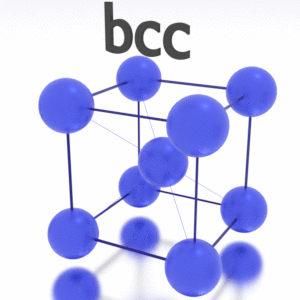
Thermal Properties of Chromium
Chromium – Melting Point and Boiling Point
Melting point of Chromium is 1907°C.
Boiling point of Chromium is 2671°C.
Note that, these points are associated with the standard atmospheric pressure.
Chromium – Thermal Conductivity
Thermal conductivity of Chromium is 93.7 W/(m·K).
The heat transfer characteristics of a solid material are measured by a property called the thermal conductivity, k (or λ), measured in W/m.K. It is a measure of a substance’s ability to transfer heat through a material by conduction. Note that Fourier’s law applies for all matter, regardless of its state (solid, liquid, or gas), therefore, it is also defined for liquids and gases.
Coefficient of Thermal Expansion of Chromium
Linear thermal expansion coefficient of Chromium is 4.9 µm/(m·K)
Thermal expansion is generally the tendency of matter to change its dimensions in response to a change in temperature. It is usually expressed as a fractional change in length or volume per unit temperature change.
Chromium – Specific Heat, Latent Heat of Fusion, Latent Heat of Vaporization
Specific heat of Chromium is 0.45 J/g K.
Heat capacity is an extensive property of matter, meaning it is proportional to the size of the system. Heat capacity C has the unit of energy per degree or energy per kelvin. When expressing the same phenomenon as an intensive property, the heat capacity is divided by the amount of substance, mass, or volume, thus the quantity is independent of the size or extent of the sample.
Latent Heat of Fusion of Chromium is 16.9 kJ/mol.
Latent Heat of Vaporization of Chromium is 344.3 kJ/mol.
Latent heat is the amount of heat added to or removed from a substance to produce a change in phase. This energy breaks down the intermolecular attractive forces, and also must provide the energy necessary to expand the gas (the pΔV work). When latent heat is added, no temperature change occurs. The enthalpy of vaporization is a function of the pressure at which that transformation takes place.
Chromium – Electrical Resistivity – Magnetic Susceptibility
Electrical property refers to the response of a material to an applied electric field. One of the principal characteristics of materials is their ability (or lack of ability) to conduct electrical current. Indeed, materials are classified by this property, that is, they are divided into conductors, semiconductors, and nonconductors.
See also: Electrical Properties
Magnetic property refers to the response of a material to an applied magnetic field. The macroscopic magnetic properties of a material are a consequence of interactions between an external magnetic field and the magnetic dipole moments of the constituent atoms. Different materials react to the application of magnetic field differently.
See also: Magnetic Properties
Electrical Resistivity of Chromium
Electrical resistivity of Chromium is 125 nΩ⋅m.
Electrical conductivity and its converse, electrical resistivity, is a fundamental property of a material that quantifies how Chromium conducts the flow of electric current. Electrical conductivity or specific conductance is the reciprocal of electrical resistivity.
Magnetic Susceptibility of Chromium
Magnetic susceptibility of Chromium is +280e-6 cm^3/mol.
In electromagnetism, magnetic susceptibility is the measure of the magnetization of a substance. Magnetic susceptibility is a dimensionless proportionality factor that indicates the degree of magnetization of Chromium in response to an applied magnetic field.
